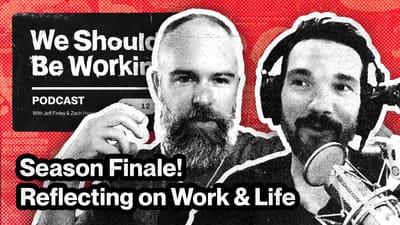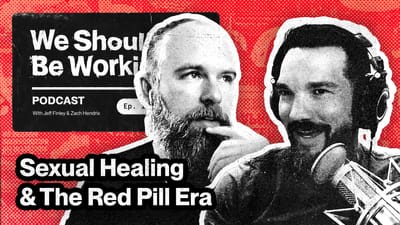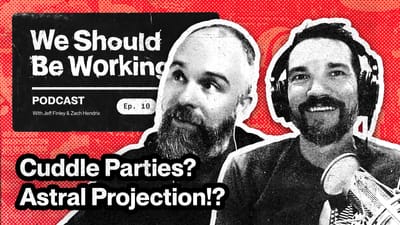True Love vs Toxic Love: 14 Core Differences (ep 16)

I saw this post yesterday on Facebook the other day and thought it was on point. It was a list of 14 core differences between true love and toxic love. I've experienced my share of both.
It's always hard to define what true love is, but another word is unconditional love. You may have felt divine, true love in one moment, but then dipped back into attached and needy love the next moment.
What is interesting, is as a collective, humanity is beginning to shift into more of the "true love" state of mind.
At least, that's what I'm noticing for myself.
This is what I am calling "new world." The "old world" paradigm is founded on separation, attachment, and fear. I notice thoughts and feelings come up that also carry this insight that this is "old world" and it's bubbling up to my awareness for me to heal and integrate. This is something I am seeing myself naturally progress to the more I follow my heart's instincts.
Listen to this week's podcast episode where I break down this list and give my oh so humble opinion on the matter.
True Love VS Toxic Love
| True Love ❤️ | Toxic Love 🤢 |
|---|---|
| Development of self is the first priority. | Obsession with the relationship. |
| Room to grow, expand; desire for others to grow. | Security and comfort in sameness; intensity of need seen as proof of love—often driven by fear, insecurity, or loneliness. |
| Separate interests; other friends; maintain other meaningful relationships. | Total involvement; limited social life; neglect old friends and interests. |
| Encouragement of each other’s growth; secure in own worth. | Preoccupation with partner’s behavior; fear of partner changing. |
| Appropriate trust (trusting partner to behave according to their fundamental nature). | Jealousy, possessiveness, fear of competition; protecting "supply." |
| Compromise, negotiation, or taking turns at leading; problem-solving together. | Power plays for control; blaming; passive or aggressive manipulation. |
| Embracing each other’s individuality. | Trying to change the other into one’s own image. |
| Relationship deals with all aspects of reality. | Relationship is based on delusion and avoidance of unpleasant truths. |
| Self-care by both partners; emotional state not dependent on the other’s mood. | Expectation that one partner will fix and rescue the other. |
| Loving detachment (healthy concern about partner while letting go). | Fusion (being obsessed with each other’s problems and emotions). |
| Sex is a free choice growing out of caring and friendship. | Pressure around sex due to fear, insecurity, or need for immediate gratification. |
| Ability to enjoy solitude and being alone. | Unable to endure separation; clinging. |
| Cycle of comfort and contentment. | Cycle of pain and despair. |
| Conversations based on intent to understand, help, or convey affection. | Conversations based on intent to blame, defend, or manipulate. |
Final Takeaways
- Healthy love is interdependent, meaning both partners support each other while maintaining autonomy.
- Toxic love is rooted in insecurity, fear, and control, often leading to emotional exhaustion, resentment, or dysfunction.
- Many unhealthy dynamics stem from attachment wounds, low self-esteem, or unresolved past trauma, which can create cycles of codependency or emotional manipulation.
- Growth is the key differentiator: Healthy relationships evolve over time, while toxic ones resist change and foster stagnation.
What has been your experience?
No spam, no sharing to third party. Only you and me.








Member discussion